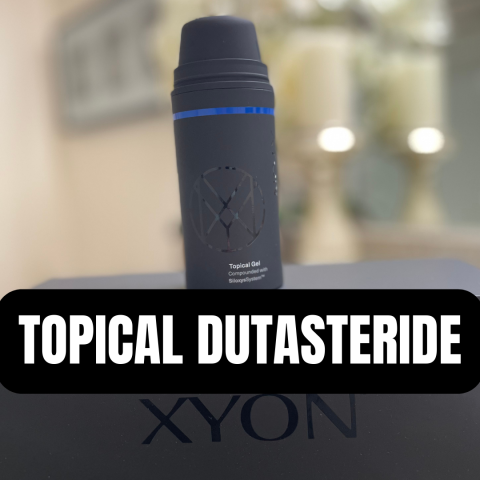Have you been struggling with hair loss? If so, topical dutasteride may be the solution you're looking for. This medication is a powerful, non-invasive treatment option that can help reduce and stop hair loss, providing long-term results. Let's take a closer look at how topical dutasteride works, who it's best suited for, and how to ensure successful outcomes.
How Topical Dutasteride Works
Topical dutasteride is a compounded medication used to treat hair loss in men. It works by blocking the action of 5-alpha reductase enzymes responsible for converting testosterone into dihydrotestosterone (DHT). By reducing levels of DHT in the scalp, this medication helps to slow and even reverse male pattern baldness.
Who Should Use Topical Dutasteride?
Topical dutasteride is most effective when used by those with thinning or receding hairlines caused by male pattern baldness or hereditary hair loss (alopecia). However, it should be noted that this medication does not work on all types of hair loss and will not help with conditions like alopecia areata or traction alopecia. It is important to discuss your condition with your doctor before beginning any treatment plan to ensure it is right for you. Xyonhealth recently released its topical dutasteride formula with Siloxysystem gel.
What is SiloxysSystem™ Gel
SiloxysSystem™ Gel was developed to help reduce the risk of systemic exposure. Applying the gel directly to the scalp helps localize the medication. Meanwhile, barrier-forming components within the gel facilitate the controlled release of drug molecules. This controlled release maximizes the medication's distribution among hair follicle cells.
These properties enable dutasteride to penetrate the top layer of skin (i.e., the epidermis) and reduce the medication's passive movement from the skin into the bloodstream. It is important to remember that not all topical formulas are created equal and that these properties are specific to SiloxysSystem™ Gel.
Ensuring Successful Outcomes
When using topical dutasteride, following directions carefully as outlined by your doctor to ensure successful outcomes is important. It is necessary to use the medication consistently over time to experience results; typically, effects may become visible after four months of use but can take up to 12 months, depending on the severity of your hair loss. Additionally, patients must understand that once they begin treatment with topical dutasteride, they must continue using it indefinitely to maintain the results; if stopped suddenly, any effects achieved will quickly diminish.
Conclusion
Topical dutasteride can provide an effective solution for those suffering from thinning or receding hairlines due to male pattern baldness or hereditary hair loss (alopecia). To achieve successful outcomes from this type of treatment, it's important that patients follow their doctor's instructions carefully while understanding that consistent use over time is necessary to experience optimal results. Proper care and attention given during topical dutasteride treatment allow patients to experience improved confidence and satisfaction without undergoing hair restoration surgery or other more invasive procedures.

